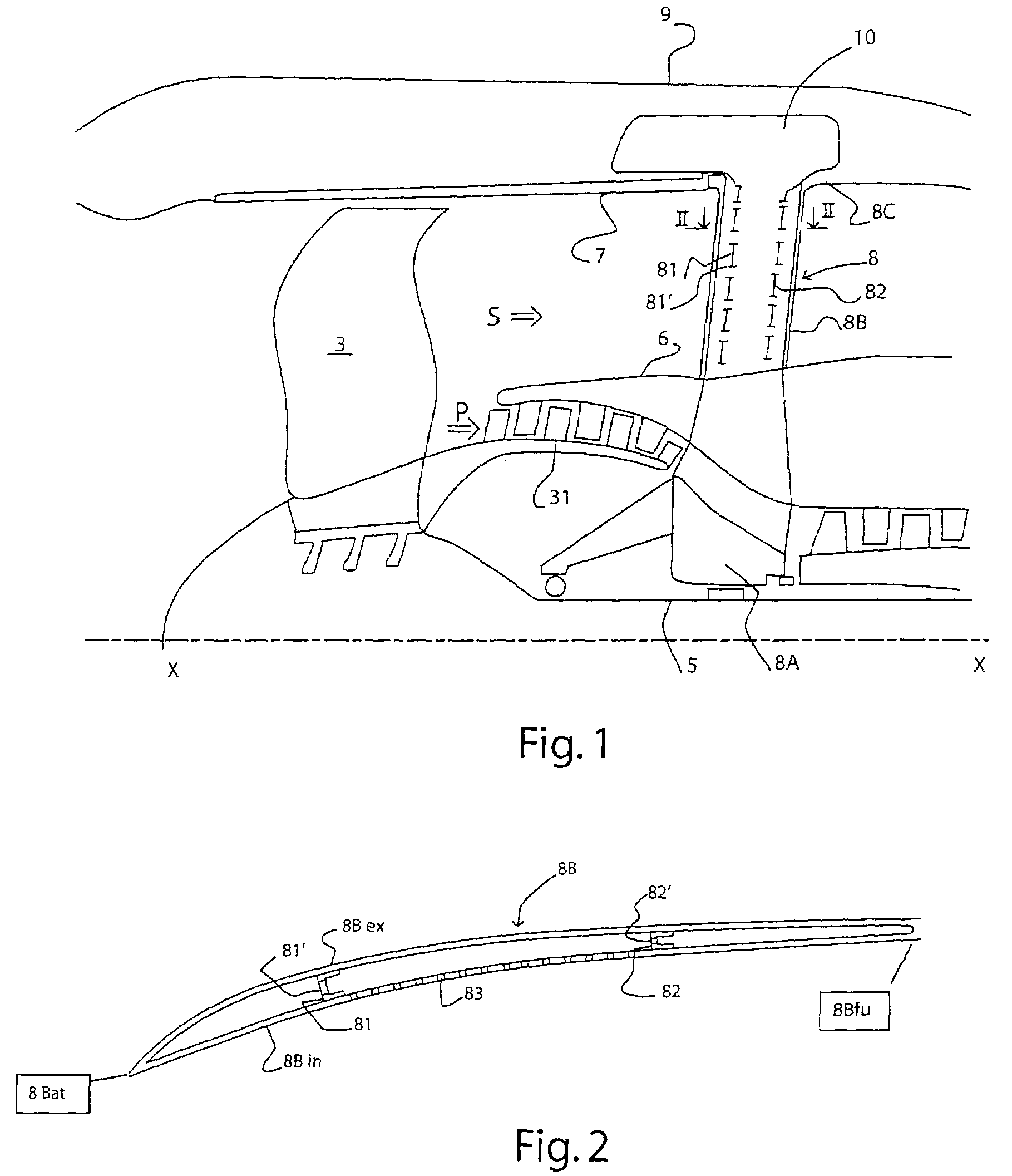Acoustic flow straightener for turbojet engine fan casing
a turbojet engine and fan casing technology, which is applied in the direction of machines/engines, stators, liquid fuel engines, etc., can solve the problems of noise generation, achieve the effect of reducing fan noise, improving fan noise reduction, and maintaining aerodynamic performance and mechanical integrity
- Summary
- Abstract
- Description
- Claims
- Application Information
AI Technical Summary
Benefits of technology
Problems solved by technology
Method used
Image
Examples
Embodiment Construction
[0020]A bypass turbofan engine 1 with the fan located at the front comprises a fan rotor 3 mounted at the front end of a shaft 5 which is connected at the downstream end to a turbine, not depicted in the figure. The fan sucks in air and compresses it into an annular double stream, namely a primary flow P closest to the axis XX of the engine and a secondary flow S concentric therewith. The primary flow P passes through successive compression stages only the first 31 and 32 of which can be seen in FIG. 1. The primary flow P is thus compressed and guided as far as the combustion chamber. The gases resulting from combustion are directed toward the turbine rotors where the energy is recovered. The low-pressure turbine is connected to the rotor of the fan 3 by the LP shaft 5 the upstream end of which can be seen in the figure. The secondary flow S is guided downstream between the fairing 6 of the body of the primary flow and the external fan casing 7 and passes through the impeller formed...
PUM
 Login to View More
Login to View More Abstract
Description
Claims
Application Information
 Login to View More
Login to View More - R&D
- Intellectual Property
- Life Sciences
- Materials
- Tech Scout
- Unparalleled Data Quality
- Higher Quality Content
- 60% Fewer Hallucinations
Browse by: Latest US Patents, China's latest patents, Technical Efficacy Thesaurus, Application Domain, Technology Topic, Popular Technical Reports.
© 2025 PatSnap. All rights reserved.Legal|Privacy policy|Modern Slavery Act Transparency Statement|Sitemap|About US| Contact US: help@patsnap.com


